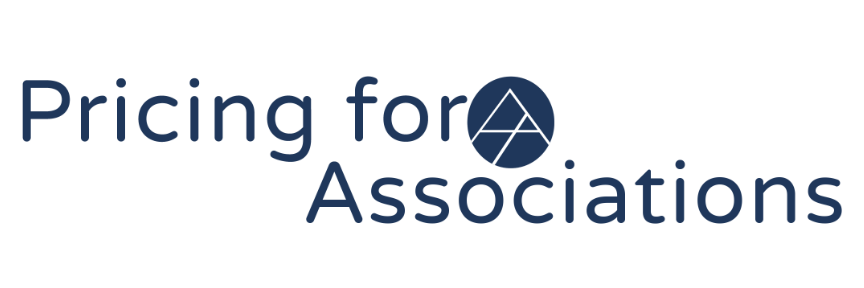The Power of Pricing
The following is an excerpt from our book, Pricing for Associations, available now on Amazon.
In the dynamic realm of associations, where every decision impacts financial sustainability and the ability to fulfill missions, pricing stands out as a potent lever. This article explores the transformative power of strategic pricing for associations, using the example of a seemingly modest 3% price increase that can translate into a substantial 10% boost in profit.
Understanding the Impact of Pricing
Pricing decisions go beyond determining the cost of membership, events, certifications, and other offerings. They are strategic choices that can significantly influence an association's financial health, mission fulfillment, and capacity for innovation.
The 3% Rule
Imagine a scenario where an association decides to implement a 3% increase in the pricing of its core offerings, be it membership fees, event registrations, or educational programs. This seemingly small adjustment has a ripple effect that goes beyond the immediate revenue increase.
Leveraging the 3% Increase:
Revenue Uplift: The straightforward outcome is a 3% increase in revenue per transaction.
Profit Magnification: However, the impact on profit is not linear; it's amplified. Due to the incremental nature of costs associated with each transaction, a 3% price increase often results in a profit boost of around 10%. As we stated earlier - simply pull your 990 and divide your gross profit by revenue. Most associations have a 30% profit margin, and if it’s lower, price will amplify profitability even more for you.
Investment Capacity: The additional profit provides associations with a financial cushion to invest in innovation, technology, and enhanced offerings.
Strategic Considerations in Pricing:
When working with clients, we typically hear a combination of the following four strategic considerations when setting prices:
The first objective is for ‘profitability’. This is typically where we are landing when we're working on a Pricing and Value project with the client. The client is looking to maximize their profitability on a specific product or service so that their margins are healthier, and they can therefore use the additional bottom line profits for their reserves or for new programming that can advance the mission forward. The key is to use value-based pricing, value-based marketing, and value-based selling so that you are capturing and delivering the right value to the audience, and then capturing your piece of the pie through pricing to maximize your profitability.
The second strategic pricing objective would be ‘volume’. Volume is about reaching as many people as possible. An example would be to make something affordable, in a way that you could be charging more because of value-based pricing but you choose not to, so that more people have access to the product or service. This is typically considered a loss leader, although you do not always have to be taking a loss on the price versus your cost of doing business. You could absolutely be profitable, just not at peak profitability, because your goal is not profit but about reaching as many people as possible and accessibility financially.
The third strategic pricing objective is to acquire new customers. Acquiring new customers can mean that it's priced competitively, or it could mean that it's priced for value. But the bottom line goal is that the value is communicated in such a way that it is a no-brainer for cold audiences to convert. This is an entirely different strategy than Pricing and Value for your warm audiences because they are already familiar with your organization. Whether they are a returning client for a conference, or whether they would be a new customer for another product, let's say that they're a member but they've never paid to attend a conference before, that is one strategy in pricing versus pricing for a brand new customer who is new to your organization. This pricing is also typically done on one or two specific products, such as membership and digital education so that there is a natural entry point where people can experience what your organization has to offer.
The fourth strategic pricing objective is favorable price perception. This can easily tie into the rest. But I believe that it's what most associations think of and that's why I am isolating it as a fourth objective. Most associations are afraid to discuss pricing, value, and profitability because they are afraid that their members will have an unfavorable perception of them if they are focused on profits or volume or acquiring new customers. Outside of favorable price perception being an objective, because of insecurity, favorable price perception can also be a valid objective if your organization has been considered as price gouging or not delivering on the value promised, and therefore you need to do a strong reset and a public relations initiative that backs up that you are only taking prices based on the value that you provide.
Strategic pricing is not merely about adjusting numbers; it's about sculpting the financial landscape of associations. A modest 3% increase, when strategically implemented, can unlock a cascade of benefits, from increased revenue to amplified profit margins. Associations must approach pricing as a dynamic tool for financial sustainability, innovation, and delivering ever-increasing value to their members. By leveraging the power of pricing, associations can navigate challenges, seize opportunities, and ensure a prosperous future for both the organization and its members.


